
How to Use RFID-RC522: Examples, Pinouts, and Specs
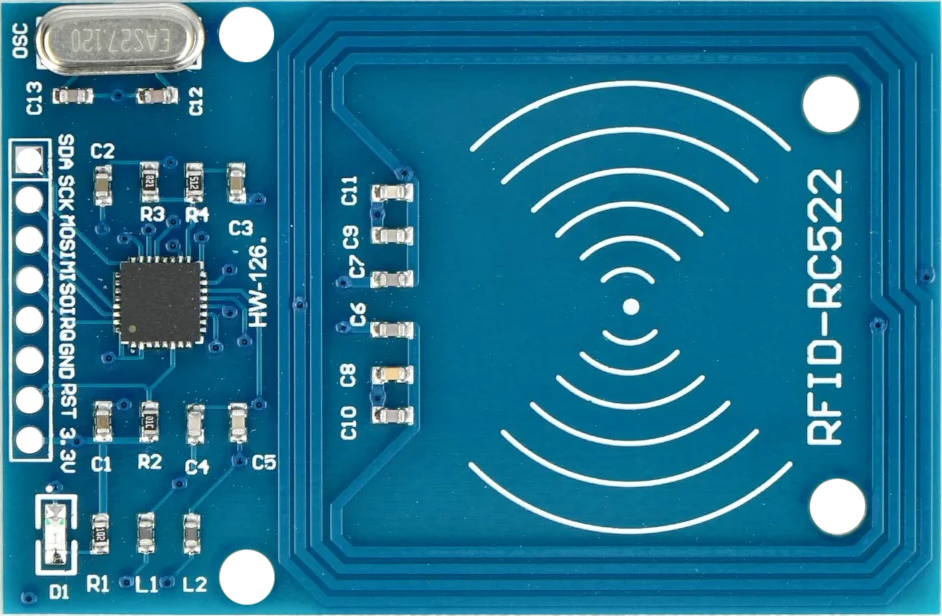
 Design with RFID-RC522 in Cirkit Designer
Design with RFID-RC522 in Cirkit DesignerIntroduction
The RFID-RC522 is a compact and cost-effective RFID reader/writer module that operates at a frequency of 13.56 MHz. It is widely used for reading and writing RFID tags and cards, enabling wireless communication in various applications. This module is based on the MFRC522 IC, which supports ISO/IEC 14443A/MIFARE protocols. Its small size, low power consumption, and ease of integration make it a popular choice for projects involving access control, inventory management, attendance systems, and identification systems.
Explore Projects Built with RFID-RC522
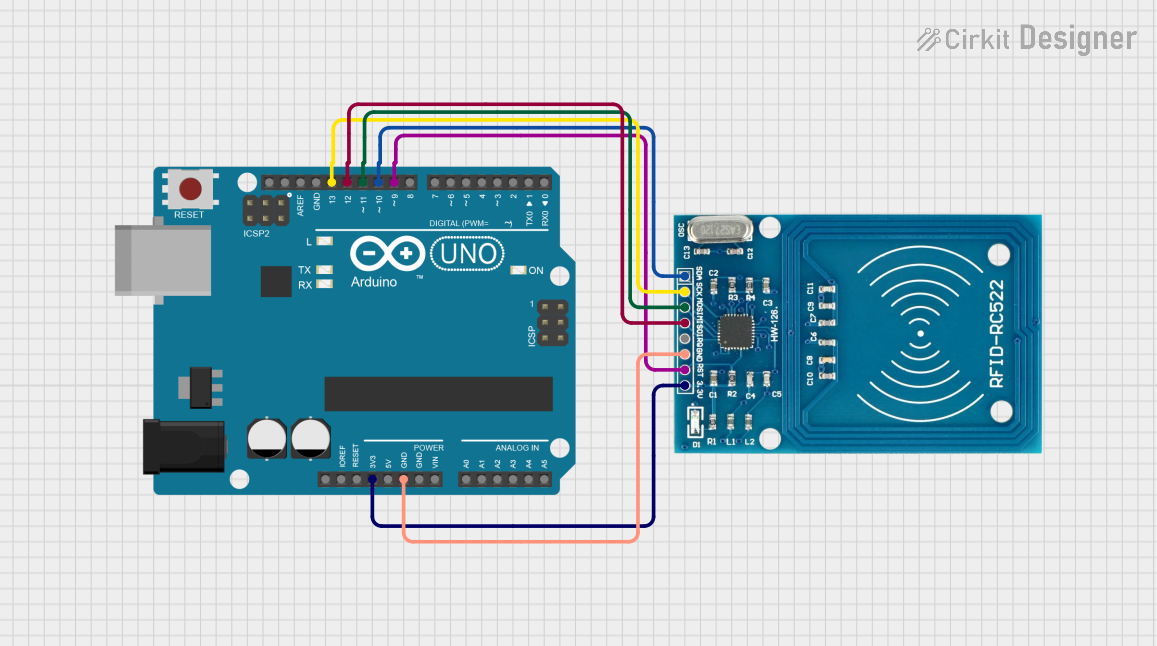
 Open Project in Cirkit Designer
Open Project in Cirkit Designer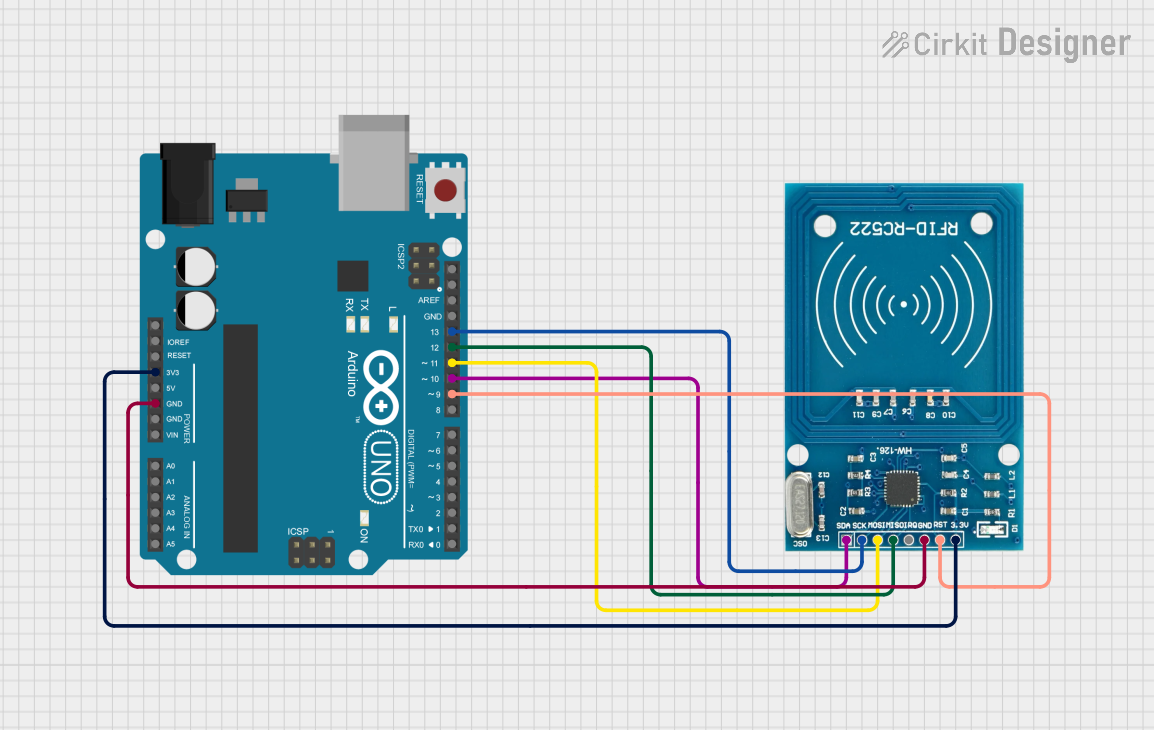
 Open Project in Cirkit Designer
Open Project in Cirkit Designer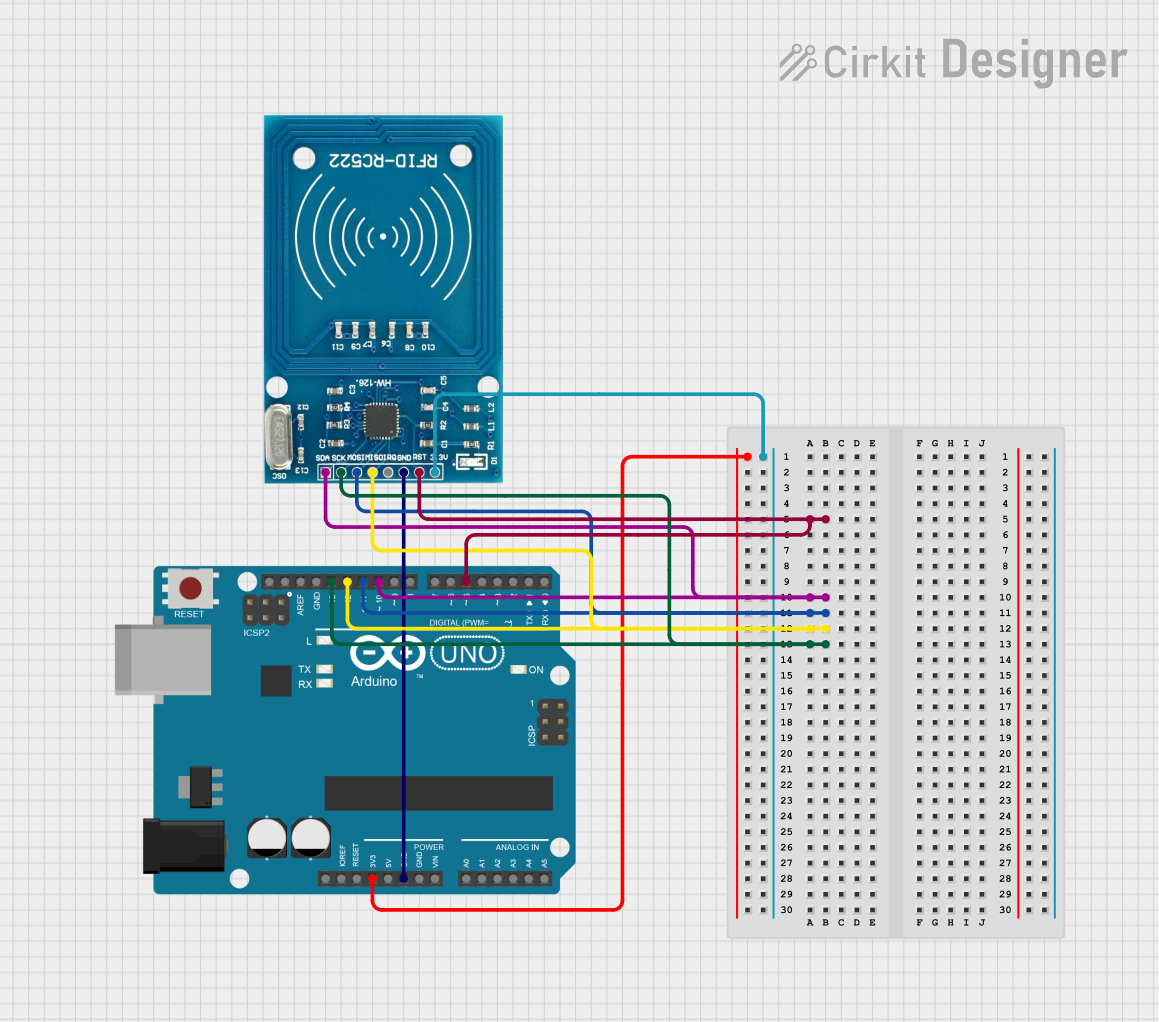
 Open Project in Cirkit Designer
Open Project in Cirkit Designer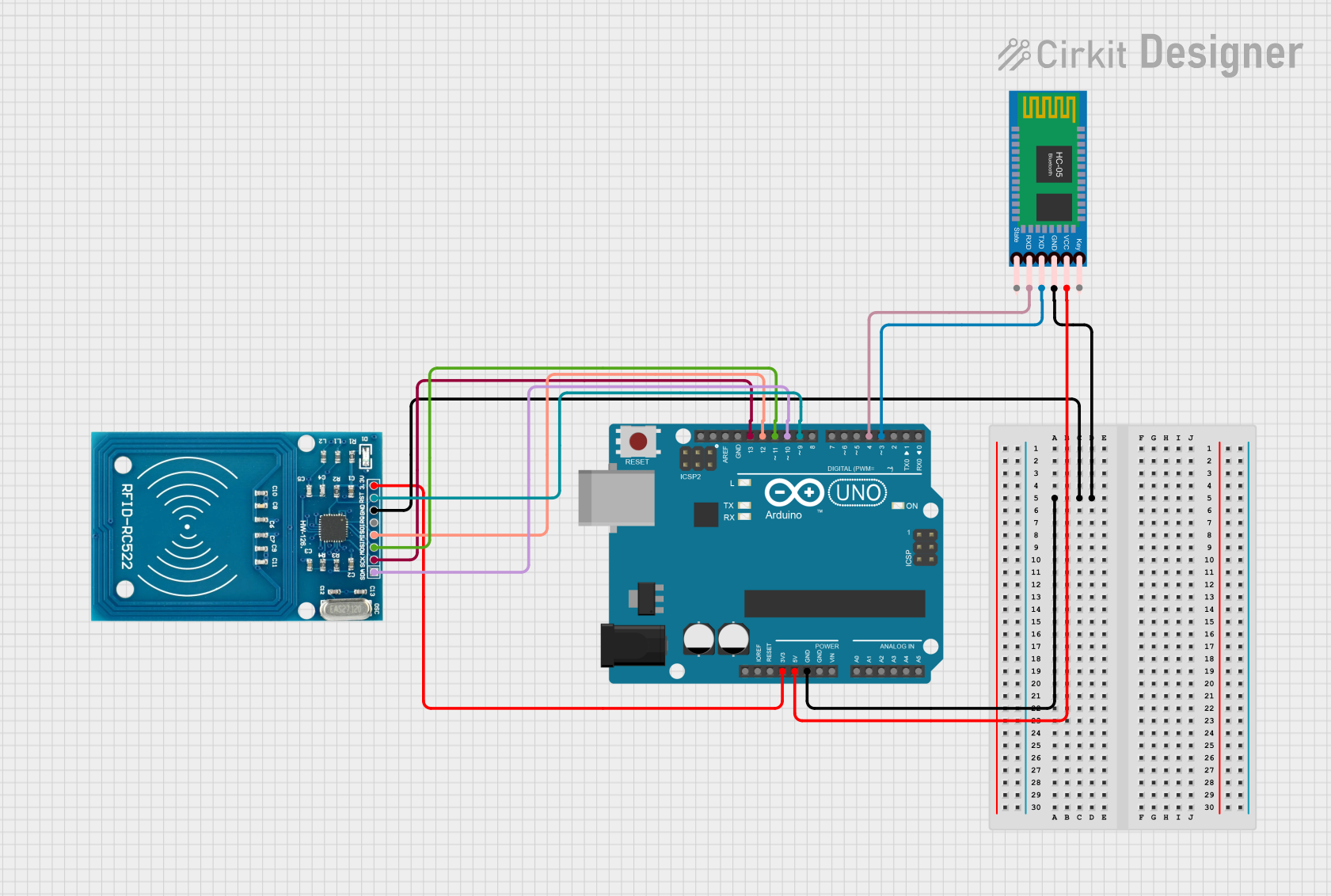
 Open Project in Cirkit Designer
Open Project in Cirkit DesignerExplore Projects Built with RFID-RC522

 Open Project in Cirkit Designer
Open Project in Cirkit Designer
 Open Project in Cirkit Designer
Open Project in Cirkit Designer
 Open Project in Cirkit Designer
Open Project in Cirkit Designer
 Open Project in Cirkit Designer
Open Project in Cirkit DesignerTechnical Specifications
The RFID-RC522 module is designed to provide reliable and efficient RFID communication. Below are its key technical details:
General Specifications
- Operating Voltage: 2.5V to 3.3V (logic level), 5V (via onboard regulator)
- Operating Current: 13-26mA (typical)
- Operating Frequency: 13.56 MHz
- Communication Protocol: SPI, I2C, UART (default: SPI)
- Reading Distance: Up to 5 cm (depending on tag type and environment)
- Supported RFID Standards: ISO/IEC 14443A/MIFARE
- Dimensions: 40mm x 60mm
Pin Configuration and Descriptions
The RFID-RC522 module has an 8-pin interface for communication and power. Below is the pinout:
| Pin | Name | Description |
|---|---|---|
| 1 | VCC | Power supply input (3.3V or 5V). |
| 2 | RST | Reset pin. Active LOW. Used to reset the module. |
| 3 | GND | Ground connection. |
| 4 | IRQ | Interrupt pin. Can be used to signal events (optional). |
| 5 | MISO | Master-In-Slave-Out (SPI data output). |
| 6 | MOSI | Master-Out-Slave-In (SPI data input). |
| 7 | SCK | Serial Clock (SPI clock input). |
| 8 | SDA/SS | Slave Select (SPI chip select). Used to enable communication with the module. |
Usage Instructions
The RFID-RC522 module is easy to integrate into microcontroller-based systems, such as Arduino. Below are the steps to use the module in a circuit:
Connecting the RFID-RC522 to an Arduino UNO
Wiring the Module: Connect the RFID-RC522 module to the Arduino UNO as follows:
RFID-RC522 Pin Arduino UNO Pin VCC 3.3V GND GND RST Pin 9 IRQ Not connected MISO Pin 12 MOSI Pin 11 SCK Pin 13 SDA/SS Pin 10 Install Required Libraries:
- Download and install the
MFRC522library from the Arduino Library Manager or GitHub.
- Download and install the
Upload Example Code: Use the following example code to read RFID tags:
#include <SPI.h> #include <MFRC522.h> #define RST_PIN 9 // Reset pin connected to Arduino pin 9 #define SS_PIN 10 // Slave Select pin connected to Arduino pin 10 MFRC522 rfid(SS_PIN, RST_PIN); // Create an instance of the MFRC522 class void setup() { Serial.begin(9600); // Initialize serial communication SPI.begin(); // Initialize SPI bus rfid.PCD_Init(); // Initialize the RFID module Serial.println("Place your RFID card near the reader..."); } void loop() { // Check if a new card is present if (!rfid.PICC_IsNewCardPresent()) { return; // Exit if no card is detected } // Check if the card can be read if (!rfid.PICC_ReadCardSerial()) { return; // Exit if reading fails } // Print the UID of the card Serial.print("Card UID: "); for (byte i = 0; i < rfid.uid.size; i++) { Serial.print(rfid.uid.uidByte[i], HEX); // Print each byte in hexadecimal Serial.print(" "); } Serial.println(); rfid.PICC_HaltA(); // Halt communication with the card }
Important Considerations and Best Practices
- Power Supply: Ensure the module is powered with 3.3V. If using 5V, verify that the onboard regulator is functioning.
- Antenna Placement: Avoid placing the module near metal objects, as they can interfere with the RFID signal.
- Tag Compatibility: Use tags/cards that comply with ISO/IEC 14443A standards for best results.
- SPI Configuration: Ensure no other SPI devices are using the same Slave Select (SS) pin.
Troubleshooting and FAQs
Common Issues and Solutions
The module is not detected by the microcontroller:
- Verify the wiring connections, especially the SPI pins.
- Ensure the correct pins are defined in the code (
SS_PINandRST_PIN).
The RFID tag is not being read:
- Check the distance between the tag and the module. It should be within 5 cm.
- Ensure the tag is compatible with the module (ISO/IEC 14443A).
Interference or poor performance:
- Avoid placing the module near metal surfaces or other electronic devices.
- Use a stable power supply to prevent voltage fluctuations.
Error: "MFRC522 library not found":
- Install the
MFRC522library from the Arduino Library Manager.
- Install the
FAQs
Q: Can the RFID-RC522 write data to RFID tags?
A: Yes, the module supports both reading and writing to compatible RFID tags.
Q: Can I use the RFID-RC522 with a 5V microcontroller?
A: Yes, the module has an onboard voltage regulator, but the logic level for communication must be 3.3V.
Q: What is the maximum range of the RFID-RC522?
A: The maximum reading distance is approximately 5 cm, depending on the tag and environmental conditions.
Q: Can I connect multiple RFID-RC522 modules to a single microcontroller?
A: Yes, you can connect multiple modules by assigning unique Slave Select (SS) pins for each module.